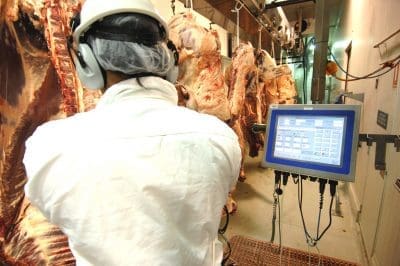Heading into September is normally a peak turnoff period for oats-finished slaughter cattle across eastern Australia. But this year, despite the presence of good crops in many growing areas, there is a distinct lack of ‘oats bullocks’ hitting the market.
 A number of large Queensland and NSW processors that would traditionally be handling bookings for serious numbers of crop-finished steers at this time of year have reported a distinct absence of numbers in 2021.
A number of large Queensland and NSW processors that would traditionally be handling bookings for serious numbers of crop-finished steers at this time of year have reported a distinct absence of numbers in 2021.
Instead, lured by booming prices for feeder cattle, evidence suggests many oats growers have utilised crops to background young cattle to feedlot entry weights, rather than grow bullocks.
For others, the red hot market for grower and feeder cattle has made it impossible to buy-in grower cattle to graze on oats. Anecdotally, there is evidence of ‘under-utilised’ oats crops in some regions of Eastern Australia, or crops being sold as agistment, because of the extreme prices being paid for young cattle.
It’s yet another example of the big distortions occurring in the supply chain, as Australia heads towards a 2021 beef kill likely to be the lowest in 35 years, as a consequence of the impacts of 2019-20 drought and major herd reduction.
In its mid-year Industry Projections released last week, Meat & Livestock Australia revised its 2021 national slaughter estimate slightly lower to 6.3 million head, on the back of supply shortages that show no signs of easing. Not since 1986 has the projected national beef kill been so low.
MLA suggests that close to three million head were killed in the first six months of 2021, with slaughter in the second half of the year expected to pick up slightly, as more cattle come off feed. Typically, Australian slaughter rises in the back half of the year.
Some indirect evidence of the greater use of oats for growing young cattle instead of finishing bullocks, can be found in average weights in this year’s sales of feeder steers.
A recent MLA analysis of weight range for young cattle being purchased by lotfeeders shows average weights are well-up this year, as breeders seek to maximise the weight of young feeder or restocker cattle before sale.
The 330–400kg and +400kg weight ranges for yearling steers typically comprise most of the cattle secured by feedlot buyers. Since the drought broke last year, however, a higher proportion of feeder cattle have fallen into the heavier +400kg category, NLRS has reported – a trend that has continued over the last 12 months.
This time last year, 330–400kg and +400kg saleyard volumes consisted of 34pc and 29pc respectively. As better seasonal conditions returned, the relationship has grown in favour of heavier feeders, with last month showing 330–400kg and 400kg+ comprising 27pc and 40pc, respectively. As the market for young cattle continues to rise this year, there has been a trend towards heavier weights going through due to available feed and financial incentive to add additional kilograms.
The abundance of grass in paddocks is helping underpin that, but so to is some of the best oats crops seen in some regions for the past four years.
Grids steady, at record highs
Processor direct consignment offers for slaughter cattle remained mostly stable this week, albeit at all-time record levels.
After some southern Queensland operators added another 10c to already record-high numbers in early August, offers seen this morning have four-tooth HGP-treated heavy steers at 680-705c/kg, and good heavy cows at 640-655c/kg. Central Queensland rates are typically 10c/kg behind those figures.
Generally mild conditions and some early grass growth is seeing a few more slaughter cattle coming forward in Queensland this week, processors reported, especially in central Queensland. Some operators in the region plan to add a fifth day to their weekly kills in coming weeks, as a result.
“We’re in better shape, numbers wise, than we thought we would be in August,” one large multi-site operator told Beef Central this morning. “But there is still a prospect that the bottom of the cycle might be pushed back a month or so this year – September could still shape up to be a very tight supply period,” he said.
Southern states processor grids continue to reflect the extreme tightness of mid-winter supply on top of drought-driven herd reduction, with many large plants operating four days only this week.
A few southern processors including O’Connor and Throsby have been attempting to procure mid-winter slaughter cattle out of the Queensland market to support local cattle, but their presence was not as noticeable this year as normal, northern operators say.
One contact estimated that heavy steer purchases out of Queensland could easily cost 840-850c/kg landed back at southern plants at present.
Southern sales simply do not have any significant numbers of heavy grass steers at present. A few decks of better-conditioned heavy steers 500-600kg sold at Gunnedah this morning averaged 430c/kg liveweight, and sold to 465c/kg (equivalent 861c/kg carcase weight). Similarly, a small offering of better-conditioned and better shaped grown steers at NVLX Wodonga this morning made between 422-500c/kg liveweight – averaging the equivalent of 884c/kg dressed.
Southern NSW and South Australian grids remain at record highs again this week, with heavy steers hitting 810c/kg in some grids on four-tooth grass HGP-free steer, and cows at 680c/kg.
The NLRS weekly kill statistics will be added to this report when they arrive this afternoon.
